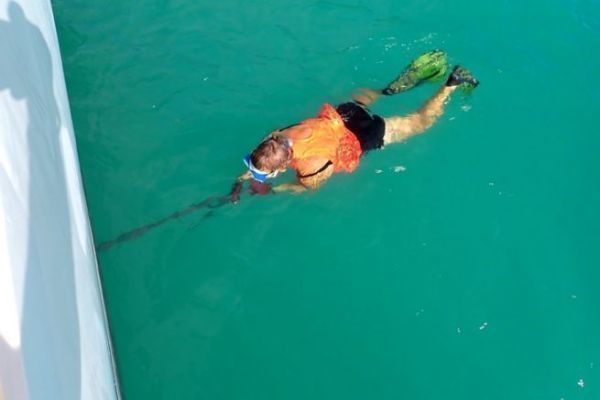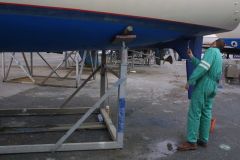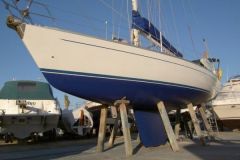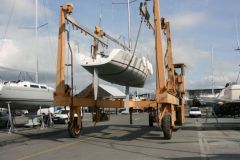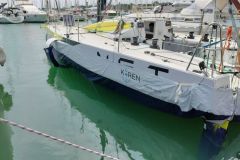Fortunately, some seasoned and inventive sailors have come up with solutions. Depending on whether you're sailing a monohull or a motorboat, the problem is different. Between a wide, flat, "planing" hull and a real, chunky, "Breton canoe"-style sea boat, the difficulties involved in snorkelling the hull are very different.
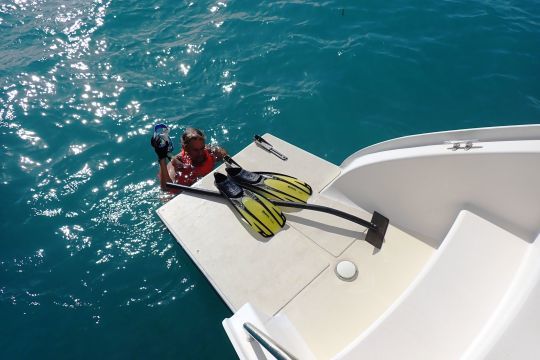
Careening at anchor
For the lucky owners of multihulls, things are much simpler. This type of vessel, being, by definition, unballasted, generally has a rather shallow draught, which makes it much easier to clean the hull simply by paddling at surface level. At the editorial office of your magazine, we met an inventive sailor who has developed an effective and inexpensive method for keeping the living works of his catamaran in a reasonable state of cleanliness.
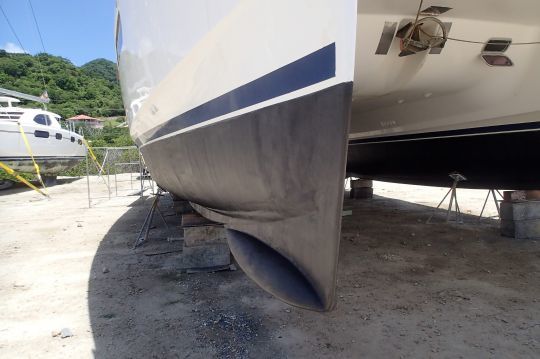
So what's the "secret" behind this "clever" browser? It's quite simple. An ordinary human arm is about 0.80 m long... Equipped with a stainless steel spatula, extended by a wooden handle, the guy (or gal) with a PMT set (fins, mask, snorkel) is incapable of scraping away intruders from the entirety of his hulls. Let's say he manages to treat 30 to 35% of the surface concerned, and that's already a fine result.
A homemade scraper
The remaining 65% can be treated with a "homemade" tool made from over-the-counter products. All you need to do is make a curved handle from the PVC tubing found in the plumbing section of any DIY store, and attach a slightly wide spatula to the end of it.
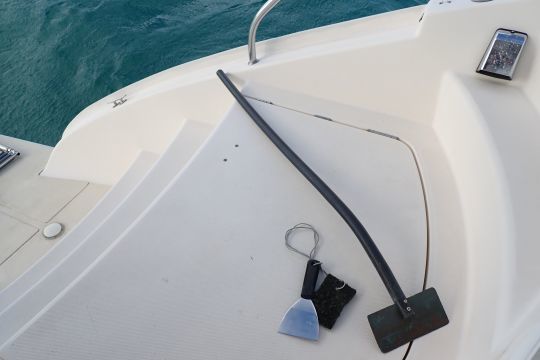
These inexpensive pipes can be easily bent by heating them with an ordinary hairdryer. Few do-it-yourselfers own one, which is not the case for most of their wives... As for taciturn solo sailors, a heat gun is perfectly suited to the task.
There's a refinement you won't find mentioned anywhere else but here. Instead of simply attaching an ordinary off-the-shelf spatula to your super handle, specially curved to the shape of your half hulls, it's very clever to obtain a copper plate, approximately 250 mm X 100 mm X 3 mm, which will be fixed in place of this "ordinary" spatula. Why would you do this? Excellent question.
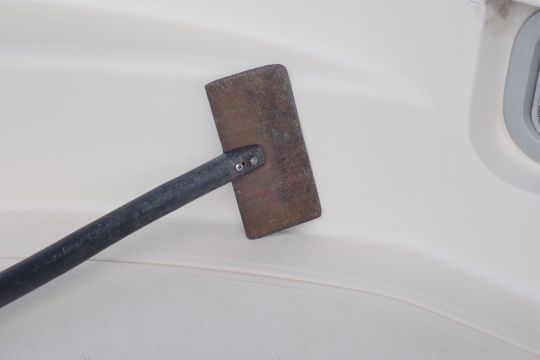
Why a copper spatula?
Why choose copper for the metal of our fairing spatula? It's well known that oxidation of this metal produces a green acetate - a very pretty shade, by the way - which happens to be poisonous. It was widespread in the not-too-distant past, when people didn't buy antifouling (now more expensive per liter than a vintage Bordeaux...) from the local shipyard, because it didn't exist. Instead, we simply lined the boats' brightwork with copper plates, which significantly slowed the proliferation of organisms thanks to the famous "verdigris". Well, that's the trick! By scraping our hulls with a copper spatula, we leave behind metal particles that will not hesitate to poison any nasty critter that tries to get near them.
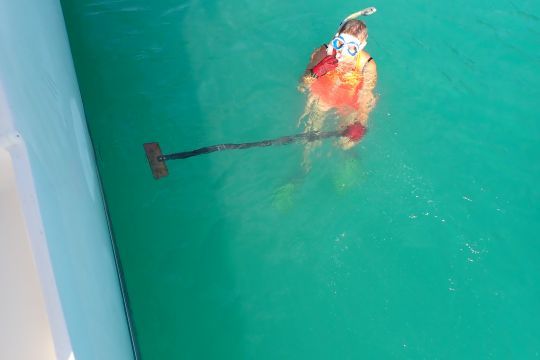
So, tropical yachtsmen, curved handle and copper spatula are the two udders of fairing economy.

 /
/ 